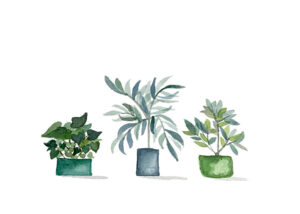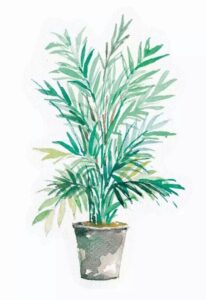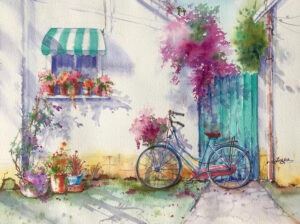Author: Nabiha Bari
Editor: Melanie Ruiz
Graphic Designer: Nabiha Bari
Publisher: Nabiha Bari
The trends of interior decor are constantly changing, where society first saw wallpaper as the ideal home, shifting to neutral

The long list of pros to having a houseplant
colored furniture. One thing that seems to stay constant is the calm, soothing look of houseplants. A couple on the table, a few by the window, and a giant one by the fireplace. Plants have always been in constant use for the work environment or just general pleasure, used as decor for a home-sweet-home feel. Why do we use houseplants in our work environments, and do they have any practical use other than being pretty?
Diving into the vast scientific findings of plants for psychosis, plants are more in one way the superheroes of everyday life.
Not surprisingly, houseplants have many positive impacts

The Bamboo Palm
on physical well-being.
To start with the obvious, houseplants freshen the air by releasing oxygen and absorbing carbon dioxide. This also helps with eliminating harmful toxins. When houseplant shopping, these are the best plants that freshen the air; Areca, Bamboo palms, Boston fern, Rubber tree, and Spider plant.
They also help increase humidity in a room. This is by releasing 97 percent of the water they absorb. If you want to warm up a room, add some houseplants to help keep respiratory distress at bay.
Surprisingly, plants can help people recover from illness faster. People who were looking at greenery post-surgery needed fewer pain medication and stayed in the hospital shorter, according to a 2002 review. It was also seen in a 2007 study, that people with plants in their workspace took fewer sick days. Who knew plants are the apple that keeps the doctor away?
It is well known that houseplants have a mental impact on a person. They are calming to look at, smell nice, and are practically an at-home therapist. Now it is the question of what exactly do plants help with.
To start, they help increase productivity and concentration up to 15 percent. A small study placed 23 students in a classroom with either a fake plant, a real plant, or no plant at all. Brain scans later showed that students with the real plants were more attentive than the other groups. Another study was conducted in 1996 that found students in a campus computer lab worked 12 percent faster with a plant nearby.
Houseplants can also reduce stress and boost moods. A study published by the Journal of Physiological Anthropology found that re-potting houseplants lowered stress response. This was compared to a computer-based task, which caused the participants to have a spike in heart rate and blood pressure, even if the participants are well-accustomed to the work.

Houseplants can drastically improve mental health, as well as being aesthetically pleasing
Plants are also constantly used for therapy practices. It was found that for people with mental illness, indoor gardening is extremely helpful. Researchers used horticultural therapy to increase well-being for patients with depression, anxiety, dementia, and other conditions. In fact, medical clinics in Manchester, England are now prescribing potted plants.
Houseplants even have a way of making one feel more committed to their workplace and their outlook in life. Two hundred twenty Amazon employees were interviewed in India and the United States. It was found that those whose work office included natural elements felt greater job satisfaction and felt more committed to their work.
Now how many houseplants is too many or too little? Simple really. If one wants to improve health and reduce stress and fatigue, they should have one large plant, eight-inch diameter pot or larger, for every 129 square feet. The plant should be positioned so each person has greenery in view. If one only wants to purify the air, they should use 15-18 small plants, 6-8 inch diameter pots, and roughly one larger plant for every 100 square feet.
Houseplants are such a universal way of decorating a room or office. It offers a splash of color and alludes to a calming sensation. A plant can be acceptable in any fashion trend, whether dark academia, indie, or neutral. With low maintenance and just an absolute vibe, there is almost nothing stopping you from buying one today. Not every superhero wears a cape, some wear leaves and flowers.
Sources
https://www.healthline.com/health/healthy-home-guide/benefits-of-indoor-plants#7-benefits
https://www.bioadvanced.com/articles/5-benefits-houseplants
https://www.swansonsnursery.com/blog/health-benefits-of-houseplants
Images
https://fineartamerica.com/featured/watercolor-houseplants-1-meredith-kenworthy.html

